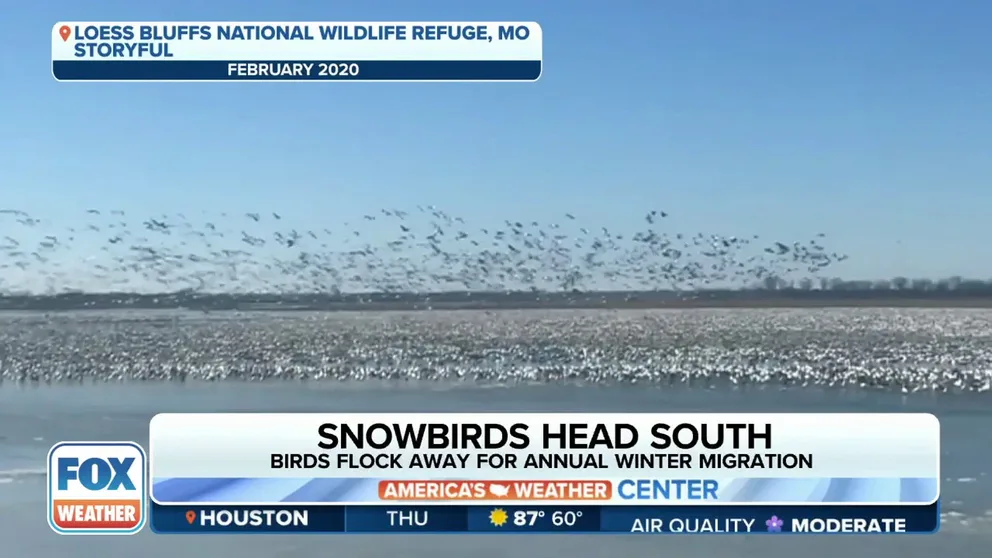Solar storms can greatly alter bird migration patterns, study finds
Scientists found that solar storms which alter the Earth's magnetic field throw birds off course, especially on cloudy nights in fall when birds can't see stars for navigation.
Billions of birds take flight to head south for the winter
As the weather gets cooler and days get shorter over 8 billion birds start their annual migration. On one Saturday in early October, researchers estimated 300 million started the journey.
Lost in migration: It's not only the weather in Earth's atmosphere that impacts birds; a new study found that the Sun's weather also blinds birds' sense of direction.
"Weather is extremely important for birds for their migration," Eric Gulson-Castillo, ornithologist and author of a recent study said. "Birds do not like to migrate in bad weather."
While humans find auroras amazing, the phenomenon is a sign of trouble for migrating birds. Strong solar storms that cause geomagnetic storms and trigger beautiful auroras mess with some birds' navigational sense.
THE DAY THE NORTHERN LIGHTS COVERED THE PLANET: HISTORY OF EARTH'S GREATEST SOLAR STORMS
What is an aurora? The northern lights explained
Dancing across the skies in vibrant ribbons of color, auroras are one of nature’s most magnificent natural phenomena.
WHAT IS THE 11-YEAR SOLAR CYCLE?
Solar storms derail bird migration
A significant percentage of birds halt migrating, while many of the ones that do end up in the wrong direction during a severe solar storm that can last for days.
"We find that the strong magnetic disturbances are associated with a more or less 10% to 17% decrease in the number of birds migrating," Gulson-Castillo said.
"And we also found that birds tend to fight less against the wind under really strong magnetic disturbances when it is cloudy," he continued. "And we think that this means that if it's cloudy, they have no longer have access to other cues in the sky, that they can no longer see the stars, for example. And so they're not able to navigate as well. And so they end up drifting more with the wind."
LEARN: HOW BIRDS NAVIGATE THE CLOUDS
Displaced birds are called vagrants. Another study found vagrants are more likely shortly after a major magnetic disturbance.
"So their study, in combination with our study, is part of this growing body of literature that suggests that birds may get lost more often during a magnetic disturbance," Gulson-Castillo said.
HERE ARE THE MOST POPULAR NATIONAL PARKS FOR BIRDWATCHING
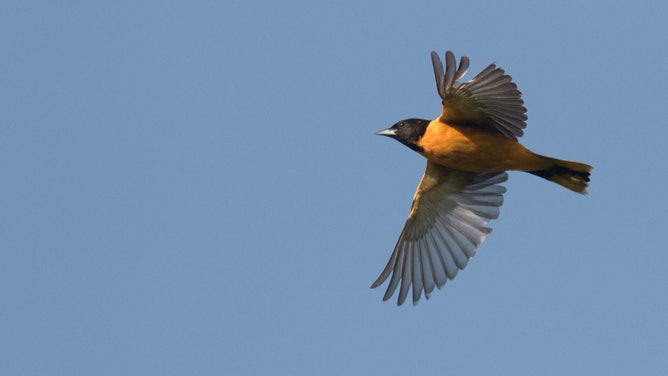
A Baltimore oriole in flight. Orioles are nocturnal migratory birds. Photo credit: Andrew Dreelin.
(Andrew Dreelin / FOX Weather)
How do birds navigate?
About 4 billion birds leave Canada to head to the U.S. each fall, according to researchers at the Cornell Lab of Ornithology. Another 4.7 billion birds leave the U.S. and head to the tropics.
In the hundreds to thousands of miles each feathered creature travels, birds navigate with a combination of cues. Birds use the position of the Sun and stars, even the rotation of stars. They also use coastlines and mountain ranges as a guide.
Birds can also sense or see Earth's magnetic field.
OVER 300 MILLION BIRDS STATED ANNUAL FALL MIGRATION SOUTH FOR THE WINTER ON ONE DAY
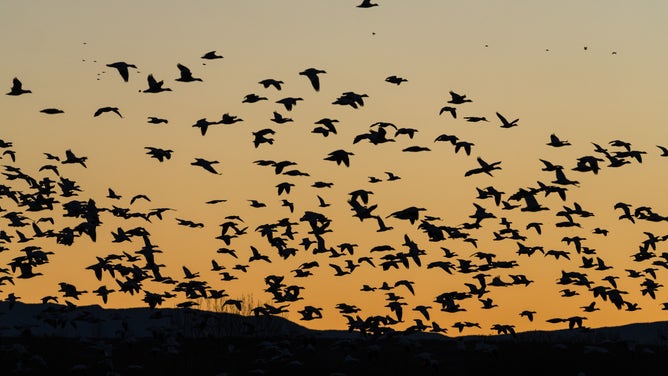
File: A flock of migrating birds.
(Jon G. Fuller / VWPics/Universal Images Group)
"The Earth's magnetic field has patterns of strength. And its angle changes over the course of order over geographic distances and in more or less predictable ways," Gulson-Castillo explained.
"So it is strongest at the magnetic poles and is weakest at the equator. It is also the most vertical at the magnetic poles and is the most horizontal at the magnetic equator," he continued. "And so those changes in the shape and strengthening field are potentially used by birds to aid in navigation."
Gulson-Castillo said the ‘how’ is not completely clear yet.
THESE MAJOR US AIRPORTS SEE THE MOST WILDLIFE-AIRCRAFT COLLISIONS
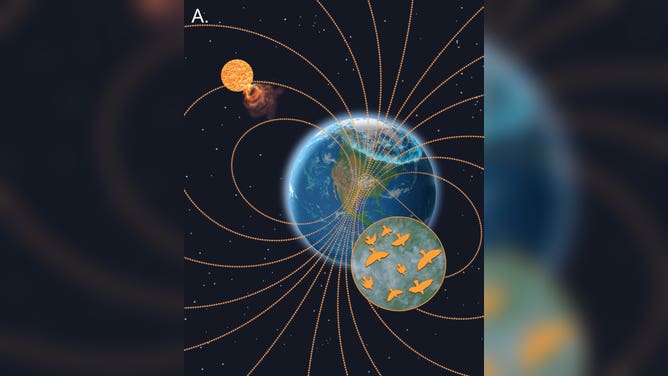
Space weather from the sun, such as coronal mass ejections, disturb Earth’s magnetic field, causing the auroras and potentially decreasing the magnetic field’s reliability for migrating birds.
(Artwork by John Megahan, University of Michigan, from Gulson-Castillo et al. in PNAS, October 2023. / FOX Weather)
"They might even be able to remember the magnetic ‘landmarks’ such as the strength of the magnetic field in different places," he said. "So all of these things in combination are thought to be used by birds. And some species might prioritize some over others."
Researchers are also studying the possibility that birds can calculate the difference between the Magnetic North Pole and True North, the northernmost point of Earth's rotational axis.
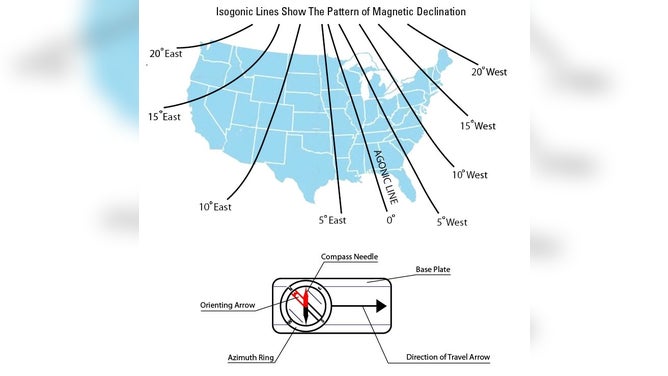
Isogonic Lines Show The Pattern of Magetic Declination
(US Geological Survey / FOX Weather)
Scientists use weather radar to track birds
Researchers collected night migration data from radar sites across the U.S. Central Flyway for the past 23 years. Scientists use weather radar to track migrating birds and estimate their numbers.
FOR THE BIRDS: PROJECT TRACKS BIRD MIGRATION USING NWS DOPPLER RADAR
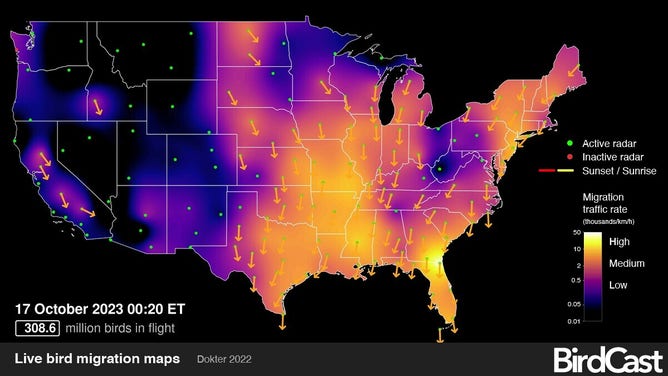
More than 300 million birds were in flight early Monday morning. The green dots are the radar sites.
(BirdCast, Cornell Lab of Ornithology)
"Generally more birds migrate at night, especially birds like songbirds and shorebirds and some species of duck," said Gulson-Castillo.
The Central Flyway is the biggest bird migration path in the U.S., stretching from Texas to North Dakota. About half of the nearly 9 billion birds heading south for the winter fly from Canada through the Great Plains and Mississippi Valley, across the Gulf of Mexico to Mexico and Central America, said Gulson-Castillo.
THESE MAJOR US AIRPORTS SEE THE MOST WILDLIFE-AIRCRAFT COLLISIONS
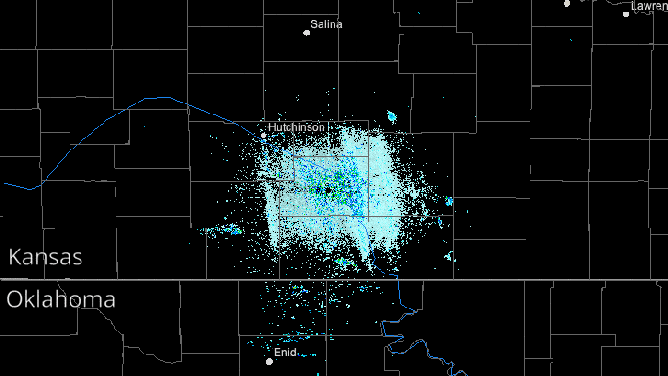
This NEXRAD Doppler radar station in Wichita, Kansas picked up birds taking off for their nocturnal migration in the evening. On a night of heavy migration, they will appear as a cloud around the radar station. Animation by Kyle Horton.
(Kyle Horton and University of Michigan / FOX Weather)
Humans can't detect solar or geomagnetic storms
Humans can't feel a change in the Earth's magnetic field. But the storms that disturb the field can agitate the upper atmosphere and can make long-range radio difficult, and will frequently lead to radio blackout conditions. GPS satellites can also experience communication issues during stronger solar storms.
NORTHERN LIGHTS ACTIVITY TO INCREASE, INCLUDE AURORAS FARTHER SOUTH DUE TO ESCALATING SUN ACTIVITY
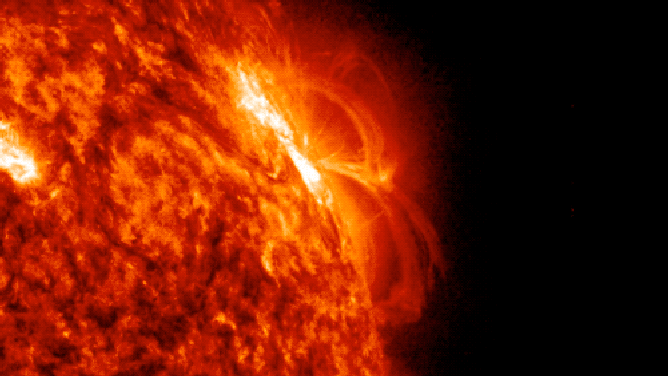
A solar flare (solar storm) erupting on March 3, 2023. The image shows a subset of extreme ultraviolet light that highlights the extremely hot material in flares, and which is colorized in orange.
(Solar Dynamics Observatory / NASA)
"I think that it is incredible that these these these large scale extraterrestrial things that generally we don't think of or notice when they happen except in how they impact our technology or how they create auroras, which are really beautiful, otherwise we can't feel the magnetic field," said Gulson-Castillo.
Solar storms can blind humans, too, in a way. Some of the strongest solar storms can reach low enough altitudes to cause voltage surges in power grids that can knock them out, as Montreal and Quebec suffered during the great solar storm of March 13, 1989.
BirdCast.info has life bird migration maps that you can find HERE.
